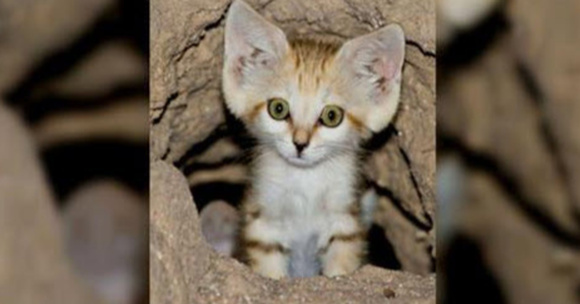You don’t need to know much about cats to realize that they can hide themselves very well. Not only are they stealthy, they can sneak into the tiniest and strangest places. There is one particular cat, however, who puts all other felines to shame with its ability to hide.
In fact, this species of cat hides so well that it remain completely unseen in the United Arab Emirates Arabian desert for more than 10 years. It is the sand cat, the smallest of all wildcats.
Sand cats look a lot like house cats, but you can tell the difference because of their thickly furred feet and the extra ruffle of fur around their faces. It is similar to the way that you can tell a bobcat from a house cat if you aren’t able to see the tail.
Sand cats are very good at evading notice, as their coats look very much like the surrounding desert sand. The thick fur on their feet allows them to walk silently and they barely leave any footprints behind.
Scientists were unsure of how many of these cats were left in the wild and they thought they may even be gone completely! Some scientists decided to set up cameras and bait to try to lure these cats out of hiding. They waited patiently.
After over a decade since one was seen, they finally spotted them. It turns out that they had been there all along.

Sand cats are little wild cats who make their homes in the deserts of North Africa and the Arabian Peninsula.
Equipped with camouflaged coats and furry feet that make no sound and barely leave prints, these tiny felines are masters of stealth.
Their fur also helps them regulate their body temperature in the extreme heat and cold of the desert.
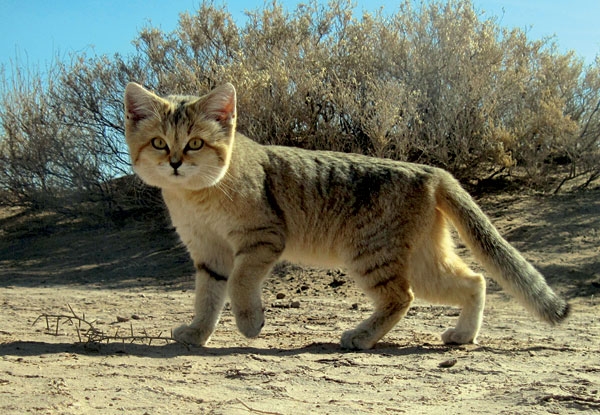
In fact, they’re so stealthy that no one had seen one in the United Arab Emirates for more than a decade, and conservationists were concerned about their fate.
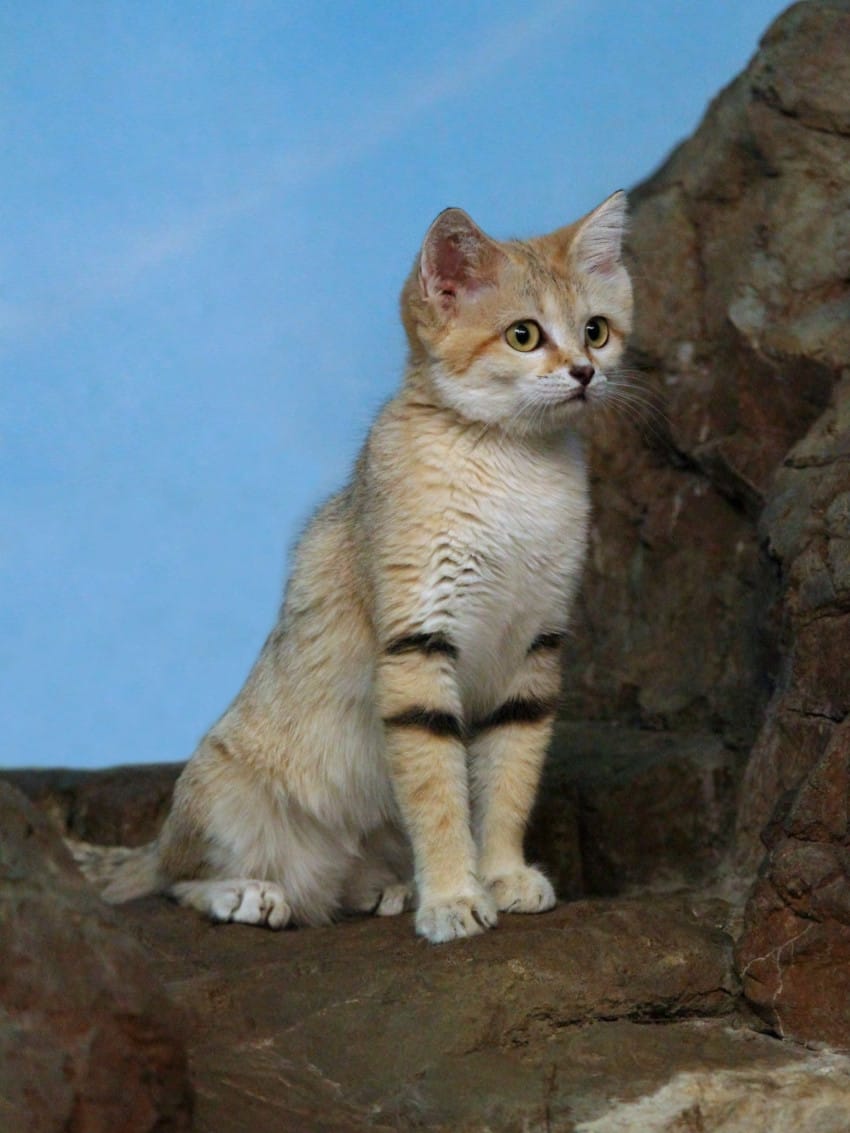
So, Shakeel Ahmed and his colleagues from Abu Dhabi’s Environment Center decided to investigate.
The set up some cameras in the desert, and left out a few cans of yummy fish and chicken cat food to lure the cats out.
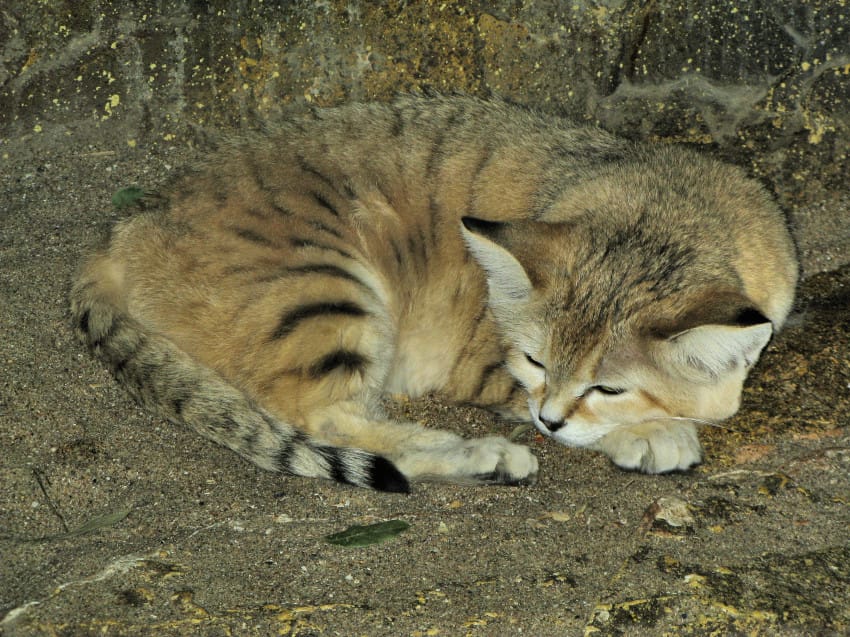
And they were in luck! Between midnight and about 6 a.m., the team spotted three sand cats. Sand cats are nocturnal, which also makes them harder to spot in the wild.
Interestingly, the sand cats all also preferred the chicken cat food to the fish.
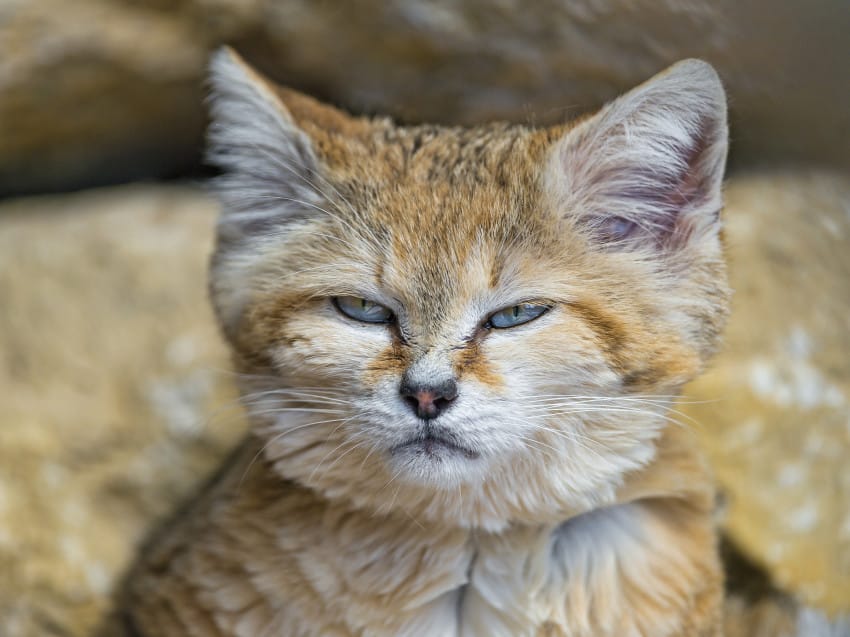
Further research showed that the sand cats were more likely to come out during full moon nights.
It proved that the sand cats had been hiding the whole time, but they were definitely still there!

And in case you’re wondering, yes, they’re adorable as babies, too.
Ahmed and his team will continue to study the cats so they can create an ideal protected space for them in the desert.
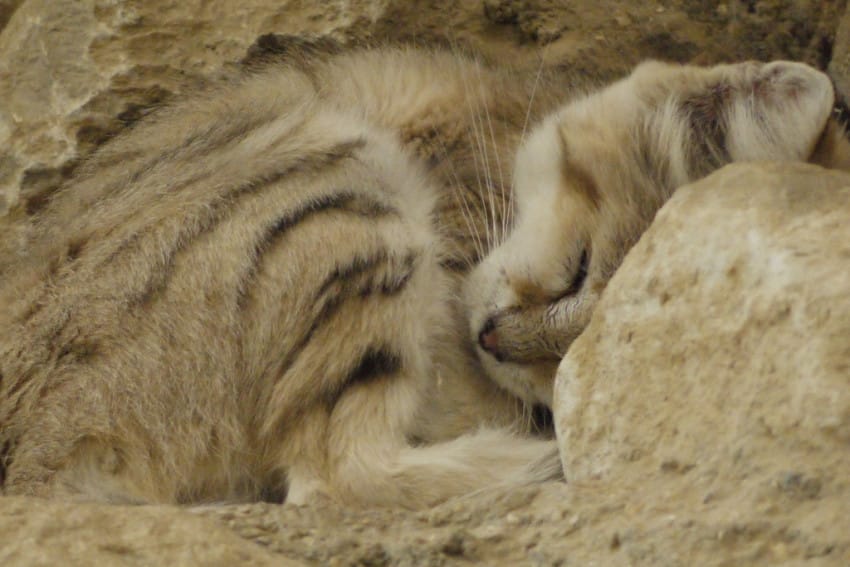
They also hope that by raising people’s awareness of sand cats, they can spur interest in environmental conservation in the Arabian Peninsula. Cute and fluffy, sand cats would make great symbols for the region’s ecosystem.
“Sand cats are the perfect face for this message of sustained conservation commitment,” the team said.
Hopefully, these desert fluff-balls will get to enjoy a safe and healthy habitat for generations to come.
Via: Little Things
Be sure to share this with your friends on Facebook

